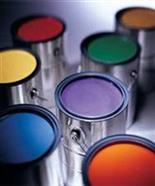
Why Is Paint A Problem?
Paint contains Volatile Organic Compounds (VOCs), more commonly referred to as solvents. These VOCs are a serious air pollutant and can be hazardous to human health causing eye, nose and ear infections, headaches and loss of coordination among other symptoms.
Due to the hazardous materials in some paints they need to be disposed of in an environmentally safe manner.
Disposing of paint by pouring it down the sink or anywhere where it could sink into the earth or ground water should be avoided at all costs as it could cause high environmental damage.
If paint is to be thrown away, paper, sawdust or a similar material should be added to soak up the liquid and prevent spillages.
Reduce Usage:
The best way to stop paint polluting the environment, is to only buy what you need.
When purchasing paint be sure to buy the correct amount you need or buy less, because you can always come back and buy more (rather than having the paint thrown away)
Re-use Of Paint:
The most environmentally friendly way to get rid of old unwanted paint, is to donate full or part used cans to a local exchange scheme.
This helps to redistribute the paint to disadvantaged family’s who need the paint but cannot afford it.
It is worth checking in your local area to see if paint recycling and redistribution schemes are in place to collect old paint.
Recycling Of Paint:
Paint itself is rarely recycled due to disproportionate costs per a litre treated. However the cans, tins and containers that store the paint can be recycled once any old paint has been washed out.
Different Types Of Paint:
There are many different types of paints that have a much lower VOC count than traditional paints.
Paints that are low in VOC’S increase indoor air quality and reduce urban smog. Other beneficial characteristics include: low odour, safer technology, excellent durability and a washable finish.